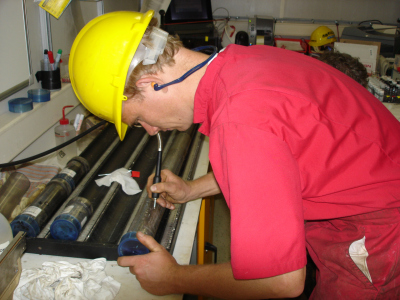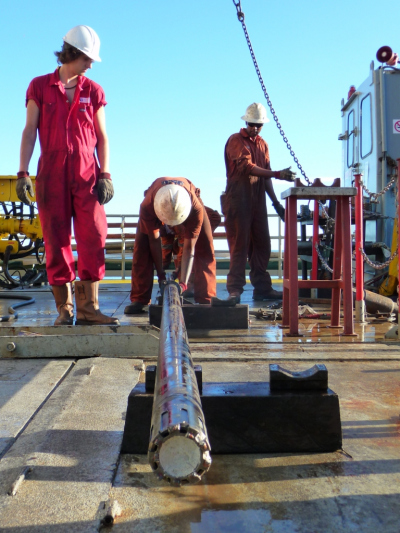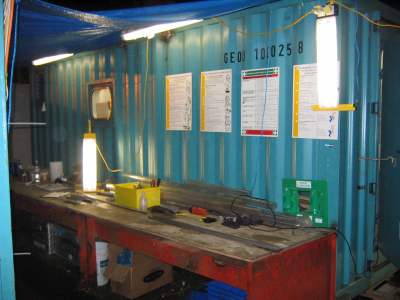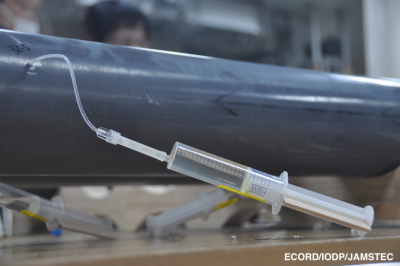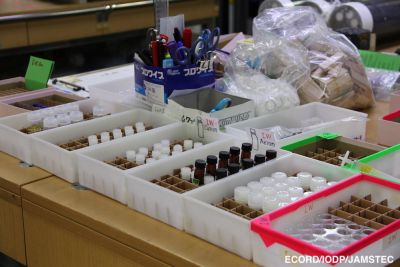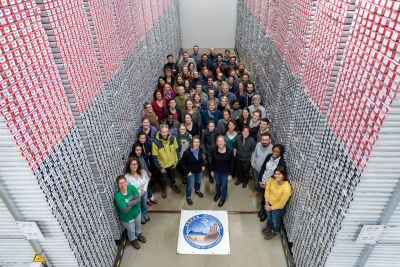Curation The cores will be curated and labelled, and stored in a temperature-controlled reefer (~4°C). There will be no splitting of the cores at sea with the majority of scientific analyses being conducted during the Onshore Science Party (OSP) at the BCR/MARUM is scheduled for February 2024.
All data will be recorded in the offshore Drilling Information System (ExpeditionDIS) database.
Curation will be done in the designated area on board the drilling platform. Curatorial representatives onboard will have delegated responsibility in the absence of the ESO Curation and Laboratory Manager and IODP Curator for the Bremen Core Repository (BCR) and MSPs, Dr. Ursula Röhl.
Core catcher (CC) description and sampling, if available, for initial sedimentological, micropaleontological, petrophysical and/or structural characterization, including perhaps taking a CC image. If no core catcher sample is recovered, a sample from the lower end of each core will be taken for shipboard analysis. Thin section billets may be taken in representative sections for preparation in advance of the OSP, as advised by the offshore sedimentologists.
Geochemistry Headspace sediment samples will be taken from the fresh cut end of a core section on a routine basis (in suitable lithologies and dependent on core recovery) and stored in the reefer container for onshore analysis.
In suitable lithologies, pore-water samples (e.g. squeezers and/or rhizone moisture samplers) will be taken on a routine basis. Pore-water will be extracted immediately from cores and ephemeral properties (e.g. salinity, pH, alkalinity and ammonia) will be analyzed. Sample splits for onshore analysis (e.g. cations, sulfide, 13C) will be prepared and preserved whilst offshore and stored in the reefer container.
Core physical properties Temperature-equilibrated cores will be measured on the expedition platform in a containerized laboratory utilizing a multi-sensor core logger (MSCL). All cores (>10 cm) will be measured on the multi-sensor core logger (MSCL; gamma density, P-wave velocity, electrical resistivity, magnetic susceptibility and natural gamma radiation). Note: the choice of liner will affect which measurements can be conducted successfully. Only natural gamma ray and density data can be acquired of core in aluminum liners. In addition, the likely vuggy nature of the reef sediments may cause drainage of some pore water during core cutting or potential transfer from alumimum to plastic liners which may negatively affect the quality of electric resistivity and p-wave velocity measurements. Scientists should keep in mind that transfer of sediments from one liner type to another may change the core consistenty and, thus, its physical properties.



